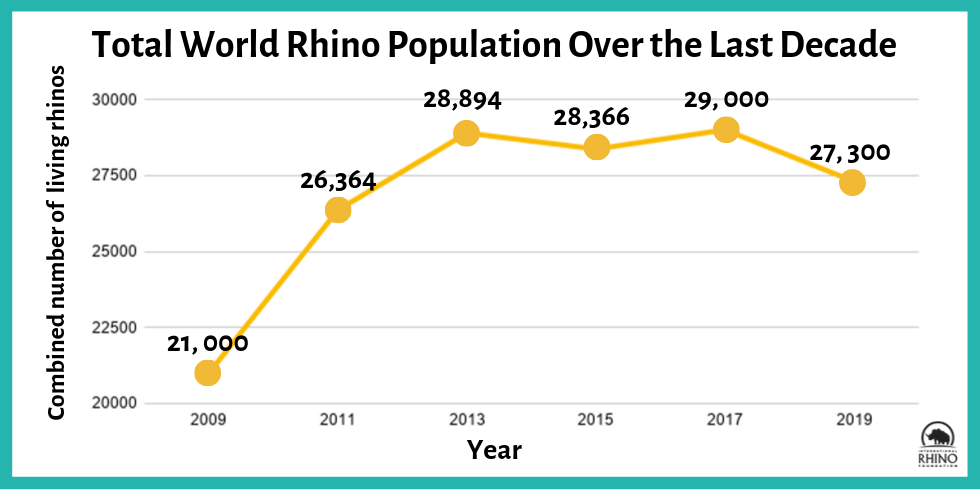2019 State of the Rhino Report: 10-Year Improvement in World Rhino Populations Offers Cautious Hope
The International Rhino Foundation (IRF) has released the 2019 State of the Rhino Report. The report details the impacts on the conservation of the world’s five species of rhinoceros:
Remarkable recoveries have been seen over the past ten years for several species, including the black rhino in Africa and the greater one-horned rhino in India and Nepal. Poaching remains the largest threat and has led to decreases for white rhinos and Sumatran rhinos over 2 years.
10 years ago, fewer than 21,000 rhinos roamed the Earth. Today, rhino numbers hover around 27,300 – a 30 percent increase over the past decade. But, shorter term, over the past 2 years, the global rhino population has seen a steady decline, dropping from a high of 29,000 in 2017 to 27,300 today.

Despite the overall 10-year increase, rhino populations have reached a tipping point as births no longer are keeping up with poaching losses. Two of the world’s five rhino species could be lost in our lifetime. Rhinos across the globe are threatened by rampant poaching to feed illegal markets, by habitat loss, and by other factors ranging from inbreeding to invasive species.
IRF’s executive director, Susie Ellis, delivers the 2019 State of the Rhino Report:
Additional Highlights and Recommendations From the Report
Assisted Reproductive Technology (ART) as part of the conservation activities for rhinos has been a trending topic in 2019. In September of this year, European scientists recovered eggs from the last female (non-reproductive) northern white rhino females, and successfully fertilized them with frozen-thawed sperm from two deceased northern white rhino bulls. Two of the eggs grew to early stage embryos and have been frozen to be later implanted into a southern white rhino surrogate. This was followed by the recovery of one egg from the last Sumatran rhino in Sabah, Malaysia, which hopefully can be matured and frozen.
In July, scientists in the US, produced a southern white rhino calf using frozen semen and artificial insemination (AI). In May, another group of US scientists hormonally induced ovulation in a greater one-horned rhino and used AI to produce a calf.
IRF follows and applauds these developments with great interest, while also noting the importance of keeping these accomplishments in perspective, particularly for a subspecies that is functionally extinct, such as the northern white rhino. No species has ever been saved using ART along and attempting to use ART to try to ‘bring back’ any subspecies or species is a complex, highly difficult endeavor. These are but the first steps on a long, long journey.
The report outlines the following four priorities for all five species of rhinos:
- Bolstering anti-poaching activities or “boots on the ground”.
- Maintaining intensive monitoring and active management of wild populations, complimented by captive breeding as needed.
- Working with local communities to ensure they receive economic incentives for participating in successful conservation programs.
- Governments must commit to enforcing their wildlife crime laws and commitments to international treaties to foster more effective international collaboration on investigations to address the entire criminal supply chain, particularly in Asia.
IRF takes the approach of maximizing options and minimizing regrets, tackling the challenges facing rhinos using multi-faceted strategies. There is more work than we can ever accomplish in our lifetime, however working together with our partners, we can achieve our goals. We applaud everyone’s commitment to ensuring that all five rhino species survive for future generations.
Join others in making a commitment by adopting a rhino or making a donation.
Next: Africa

4 thoughts on “2019 State of the Rhino Report: 10-Year Improvement in World Rhino Populations Offers Cautious Hope”
lets keep enforcing zero tolerance to poaching